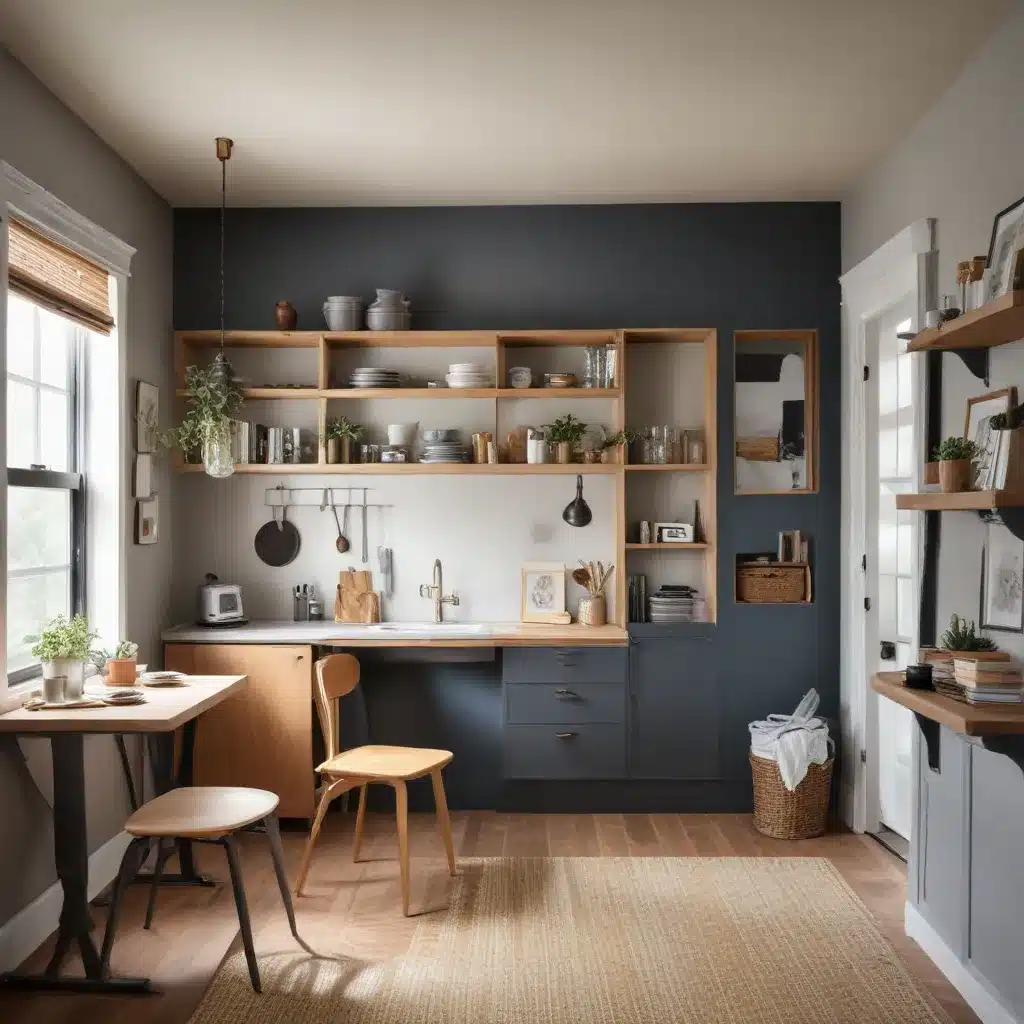As an experienced home improvement consultant, I’ve seen firsthand how the right materials and design strategies can transform even the most limited of spaces. Whether you’re working with a compact laundry room, a cozy back patio, or a cramped living area, the key is to approach your renovation with sustainability and versatility in mind.
Sustainable Material Options
Natural Fibers and Textiles
When it comes to small-space makeovers, natural materials like cork, seagrass, bamboo, and wool offer a wealth of benefits. Cork, for example, is a biodegradable, recyclable, and sound-absorbing material that can be used for everything from lighting fixtures to wall panels. Seagrass baskets and woven accents bring a beautiful, earthy texture while being incredibly durable. Bamboo, a fast-growing grass, is a versatile choice for flooring, furniture, and even kitchen accessories due to its water-resistance and antimicrobial properties. And wool, whether in the form of area rugs or dryer balls, provides natural insulation and odor control.
Reclaimed and Recycled Materials
Repurposing salvaged or recycled materials is an excellent way to infuse your small space with character while reducing waste. Look for reclaimed wood for shelving, side tables, or even accent walls. Vintage kilim rugs and cushions, like those from Maud Interiors, offer a one-of-a-kind look while supporting fair-trade practices. Even something as simple as recycled glass bottles can be transformed into chic vases or pendant lights.
Eco-Friendly Plastics and Composites
Not all plastic is created equal. Newer bioplastics and composites made from renewable, plant-based sources can provide the durability of traditional plastics with a much smaller environmental footprint. Recycled plastic furniture and decor, such as those from Ian Snow, offer stylish and sustainable solutions for small spaces.
Versatile Design Strategies
Multifunctional Furniture and Storage
When space is limited, it’s essential to maximize every square inch. Seek out convertible or modular furniture pieces that can serve multiple purposes, like a coffee table with hidden storage or a daybed that doubles as a sofa. Wall-mounted or built-in storage solutions, such as sliding doors or shelves, help keep essentials tucked away while maintaining an open, uncluttered feel.
Space-Saving Layouts and Arrangements
Thoughtful furniture placement and arrangement can make a big difference in a small space. Experiment with zoning your room into distinct areas for living, dining, and work. Utilize vertical space with tall bookcases or wall-mounted shelves to keep the floor plan feeling open. Strategically positioning mirrors can also create the illusion of depth and make a room appear larger.
Adaptable Lighting and Decor
Flexible lighting options, from dimmable fixtures to task lighting, allow you to customize the ambiance to suit your needs, whether it’s entertaining guests or winding down for the evening. Similarly, choosing modular or convertible decor pieces, like folding screens or adjustable pendant lights, ensures your small space can evolve with your changing lifestyle.
Small-Space Challenges
Maximizing Limited Square Footage
One of the biggest hurdles in small-space renovations is making the most of limited square footage. This may involve creative storage solutions, such as under-stair drawers or built-in benches with hidden compartments. Employing multi-functional furniture and being strategic about your floor plan can also help you squeeze every ounce of usable space.
Efficient Use of Vertical Space
When floor space is at a premium, it’s essential to make the most of your vertical real estate. Install ceiling-mounted shelving or pegboards to keep essential items within easy reach. Opt for tall, slender bookcases or armoires that take advantage of height without encroaching on the narrow floor plan.
Addressing Unique Architectural Features
Small spaces often come with quirky architectural details, from slanted ceilings to alcoves and nooks. Rather than viewing these as challenges, embrace them as opportunities to create custom built-in storage or cozy nooks. Strategically place furniture to work with the room’s unique shape and maximize its potential.
Holistic Makeover Approach
Integrated Sustainability Principles
When undertaking a small-space renovation, it’s essential to consider sustainability from the very start. Opt for VOC-free paints, like those from Little Greene, to create a healthier indoor environment. Choose FSC-certified wood products to ensure your materials are sourced responsibly. And don’t forget to look for energy-efficient lighting and appliances to reduce your long-term environmental impact.
Balancing Aesthetics and Functionality
The beauty of small-space design lies in the ability to harmonize form and function. While sustainable materials and space-saving solutions are crucial, it’s equally important to infuse your renovation with personal style and visual appeal. Incorporate statement lighting, textural accents, and custom built-ins to create a space that is both practical and a reflection of your unique tastes.
Personalized Solutions for Small Spaces
No two small spaces are exactly alike, which is why a one-size-fits-all approach rarely works. Take the time to understand the unique needs, challenges, and aspirations of your space and its inhabitants. Whether it’s a compact laundry room, a cozy patio, or a cramped living area, the key is to craft tailored solutions that seamlessly blend sustainability, functionality, and your individual design aesthetic.
By embracing sustainable materials, versatile design strategies, and a holistic approach to small-space renovations, you can create a beautiful, hardworking environment that is as unique as you are. With a little creativity and the right resources, even the most limited of spaces can be transformed into a sanctuary that you’ll love coming home to. For more inspiration and expert insights, be sure to visit Reluctant Renovator – your go-to resource for all things home improvement.




